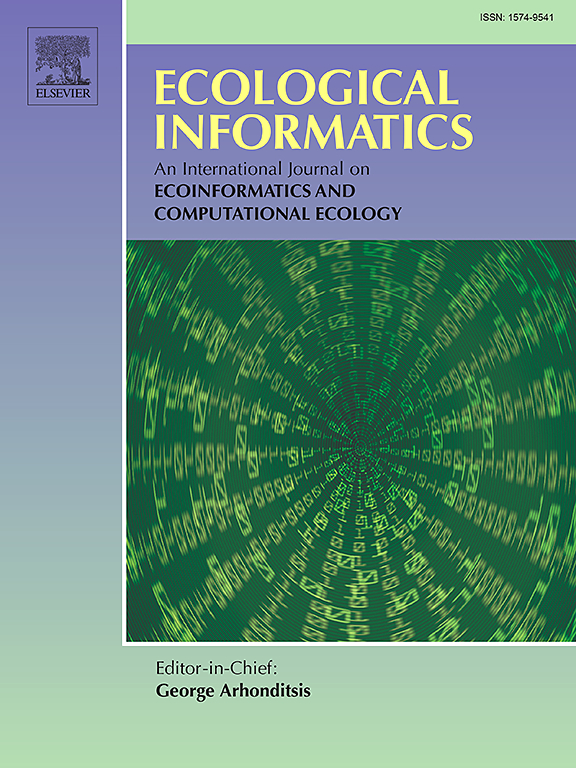Whale Vision: A tool for identifying sperm whales and other cetaceans by their flank or fluke
IF 7.3
2区 环境科学与生态学
Q1 ECOLOGY
引用次数: 0
Abstract
The Mediterranean sperm whale (Physeter macrocephalus) is classified as endangered, and effective conservation strategies require accurate knowledge of individual whales’ movements and behaviours. However, non-invasive techniques to track individuals require photographic identification of single subjects, a time-consuming process that requires manual curation. This study presents machine learning tools developed to automate the identification of individual sperm whales from photographic data. While fluke images are traditionally used for cetacean identification, this research extends deep learning-based identification to include flank images, a novel approach for sperm whales. Two Residual Neural Network models were trained using a contrastive learning process to distinguish individuals from either fluke or flank images, representing each whale as a point in a 128-dimensional latent space for fast re-identification. Evaluation on the Oceanomare Delphis dataset demonstrated identification accuracies of 81.2% for fluke images and, notably, 76.5% for flank images, highlighting the effectiveness and potential of flank-based identification. A user-friendly interface was developed to facilitate practical application, enabling both the identification of known individuals and the incorporation of new subjects. The methods and tools presented are adaptable to other cetacean species, offering a scalable and non-invasive solution to support conservation efforts.
鲸鱼视觉:通过抹香鲸和其他鲸类动物的侧面或尾巴来识别它们的工具
地中海抹香鲸(Physeter macrocephalus)被列为濒危物种,有效的保护策略需要对单个鲸鱼的运动和行为有准确的了解。然而,追踪个体的非侵入性技术需要对单个对象进行照片识别,这是一个耗时的过程,需要人工管理。本研究介绍了用于从照片数据中自动识别抹香鲸个体的机器学习工具。虽然吸虫图像传统上用于鲸类识别,但本研究将基于深度学习的识别扩展到包括侧翼图像,这是一种针对抹香鲸的新方法。使用对比学习过程训练两个残差神经网络模型,将每个鲸鱼表示为128维潜在空间中的一个点,以便快速重新识别。对Oceanomare Delphis数据集的评估表明,对吸虫图像的识别准确率为81.2%,特别是对侧翼图像的识别准确率为76.5%,突出了侧翼识别的有效性和潜力。开发了一个用户友好的界面,以方便实际应用,既能识别已知的个人,又能纳入新的科目。所提出的方法和工具适用于其他鲸类物种,为支持保护工作提供了可扩展和非侵入性的解决方案。
本文章由计算机程序翻译,如有差异,请以英文原文为准。
求助全文
约1分钟内获得全文
求助全文
来源期刊

Ecological Informatics
环境科学-生态学
CiteScore
8.30
自引率
11.80%
发文量
346
审稿时长
46 days
期刊介绍:
The journal Ecological Informatics is devoted to the publication of high quality, peer-reviewed articles on all aspects of computational ecology, data science and biogeography. The scope of the journal takes into account the data-intensive nature of ecology, the growing capacity of information technology to access, harness and leverage complex data as well as the critical need for informing sustainable management in view of global environmental and climate change.
The nature of the journal is interdisciplinary at the crossover between ecology and informatics. It focuses on novel concepts and techniques for image- and genome-based monitoring and interpretation, sensor- and multimedia-based data acquisition, internet-based data archiving and sharing, data assimilation, modelling and prediction of ecological data.
 求助内容:
求助内容: 应助结果提醒方式:
应助结果提醒方式:


